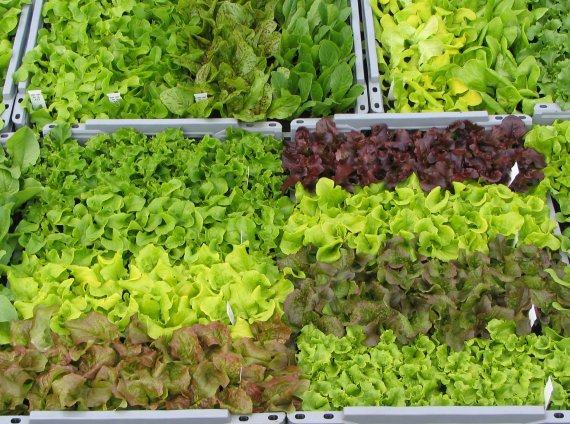© Centre for Genetic Resources, the Netherlands
Shows a study by Wageningen Plant Research.
The plant researchers grew 150 lettuce varieties from the gene bank of the Centre for Genetic Resources, the Netherlands (CGN). These included commercial varieties such as Lactuca sativa, and wild varieties such as Lactuca virosa, also known as poison lettuce. This lettuce variety produces a lot of bitter substances, which probably contribute to its resistance to diseases and pests, but it is also slightly poisonous for humans.
For all the 150 lettuce samples they grew, the plant researchers created metabolite profiles, which give an overview of all the plant’s components. ‘Of the 2000 substances, we only know what about 10 to 15 per cent of them are, and we know even less about what they do, exactly,’ says researcher Ric de Vos.
Resistance
With that knowledge, the researchers can make connections – between the presence of certain components, for example, and the lettuce’s resistance to downy mildew, a fungal pest that is a serious threat to lettuce cultivation. ‘Our research shows that this resistance is probably based on a combination of components,’ says De Vos. Further research should reveal which combination works best. ‘After that, breeding companies may be able to breed specifically for those metabolites so as to develop more resistant lettuce varieties.’
In the lettuce varieties we eat there is relatively little vitamin C, but in closely related wild varieties, there is a lot.
Robbert van Treuren
The variation in metabolites between the different lettuce varieties is great. The vitamin C level varies enormously, for instance, says researcher Robbert van Treuren. ‘In the lettuce varieties we eat there is relatively little vitamin C, but in closely related wild varieties, there is a lot. There is also a big variation in levels of flavonoids, which can protect the plant from stress caused by UV rays and insect damage.’
Cross-breeding
In general, the wild lettuce varieties contain more varied components, and in higher concentrations, than the lettuces we eat, notes Van Treuren. ‘We can now cross-breed that variation into the cultivated lettuce.’ He is mainly thinking in terms of breeding in disease resistance, but metabolites can also play a role in tolerance of drought and salt, says De Vos.
The knowledge about the components of lettuce varieties will be useful in the new project LettuceKnow, in which Utrecht and Wageningen researchers aim to develop healthier, more stress-proof lettuce varieties.

